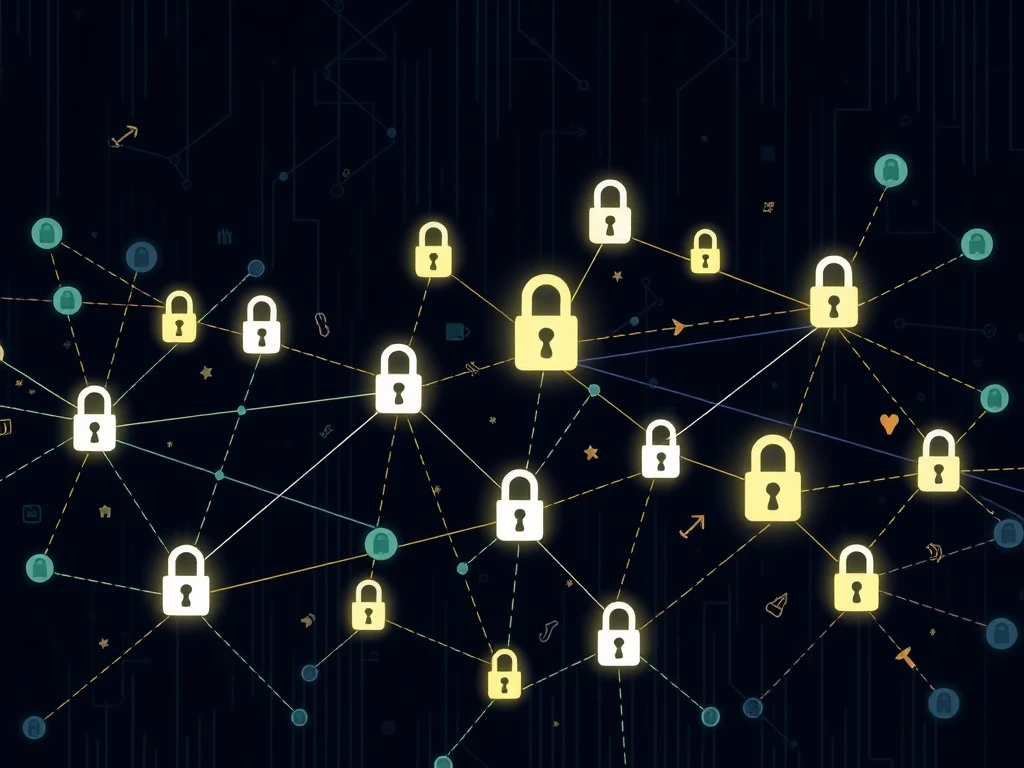Alarming: Garantex Sanctions Evaded Through Elaborate Crypto Contingency Plans

The digital frontier of cryptocurrency often presents a complex challenge for regulators. News recently emerged that **Garantex sanctions** proved less effective than intended. This Russian-linked cryptocurrency exchange, repeatedly targeted by authorities, appears to have masterminded sophisticated “contingency plans.” These strategies allowed it to circumvent enforcement efforts, maintaining its operations and facilitating **crypto illicit finance**. Understanding these tactics is crucial for anyone monitoring the evolving landscape of digital asset regulation and security.
Garantex Sanctions: A Persistent Challenge for Authorities
The U.S. government recently escalated its efforts against Garantex. On Thursday, the U.S. Treasury’s Office of Foreign Assets Control (OFAC) re-designated Garantex to its list of sanctioned entities. This action also included its apparent successor, **Grinex exchange**. This move marked the second time OFAC has sanctioned Garantex, underscoring its persistent role in the illicit financial ecosystem.
Blockchain intelligence firm TRM Labs, however, suggests these sanctions might prove ineffective. Their report on Thursday highlighted a critical issue: entities like Garantex often prepare extensive contingency plans. These plans are developed well in advance of anticipated enforcement measures. Such foresight enables them to quickly migrate clients, infrastructure, and funds to new platforms, thus skirting the impact of official crackdowns.
Garantex has long served as a major conduit for various illicit activities. It processed funds for ransomware gangs, darknet market transactions, and other forms of illegal financial movement. OFAC estimates the exchange handled at least $96 billion in crypto transactions from 2019 through March 2025. This staggering figure highlights the scale of its operations and the challenge it poses to global financial security.
Pre-Planned Successors and Sanctions Evasion Tactics
Authorities, including U.S., German, and Finnish agencies, acted against Garantex infrastructure in March 2025. Yet, TRM Labs uncovered compelling evidence of **sanctions evasion** through pre-planned measures. Kyrgyz government records show that Grinex was incorporated in December 2024. This occurred months before the Garantex seizure, indicating a deliberate preparation for a seamless transition.
Further analysis revealed strategic fund movements. Wallets linked to Garantex began transferring funds into a Russian ruble-pegged stablecoin, **A7A5 token**, in January 2025. This was weeks before the March takedown. TRM Labs states this action “underscores foreknowledge of impending enforcement.” It also demonstrates an clear intent to establish a “sanctions-resistant value-transfer channel.” This foresight allowed Garantex to protect significant assets from the impending enforcement action.
Funds from Garantex were moved weeks before the takedown of its infrastructure in March 2025. (Source: TRM Labs data)
Garantex had already processed over $100 million in illicit transactions before its initial OFAC sanctions in 2022. It handled hundreds of millions more following that designation. The multinational takedown in March 2025 did not halt these activities. Instead, Garantex’s leadership swiftly activated its contingency plan. This plan, according to TRM Labs, had been in place for months. In the days following the disruption, Telegram channels linked to Garantex began promoting Grinex. They advertised it as a new platform with familiar functionality, ensuring continuity for their user base.
Meer Exchange and the A7A5 Token’s Central Role
The network of evasion extends beyond just Grinex. Another cryptocurrency exchange, Meer, has also come under scrutiny. Meer was among the first platforms to list the **A7A5 token**. It also exhibits similar features and trading interfaces to both Garantex and Grinex, suggesting a deeper connection. The site for Meer was registered in December 2024, around the same time as Grinex and the A7A5 token’s emergence. TRM Labs points to this synchronized timing as evidence of “coordinated development.”
Meer’s trading volume surged after the March 2025 enforcement action against Garantex. This suggests it may have served as an additional channel for sustaining illicit financial flows. The strong similarities and timing indicate Meer could also be connected to Garantex’s operators, forming another layer in their **sanctions evasion** strategy.
Meer could also be connected to Garantex’s operators. (Source: TRM Labs)
The **A7A5 token** played a crucial role in the transition from Garantex to Grinex. It facilitated the movement and recovery of frozen customer funds. TRM Labs describes the Garantex–Grinex–A7A5 nexus as a “critical case study.” It offers valuable insights into monitoring illicit activity migration within the crypto space. This situation should prompt enhanced due diligence, especially for fiat-pegged tokens with non-transparent governance. These tokens, often marketed as routine settlement instruments, can become core components of sanctions-evasion strategies. This risk increases when they link to opaque corporate networks and sanctioned financial institutions.
Implications for Global Crypto Regulation and Enforcement
The case of Garantex highlights significant challenges for global regulators. Sanctioning entities is one step, but preventing their re-emergence through new platforms requires continuous vigilance. Blockchain intelligence firms like TRM Labs are vital in uncovering these complex networks. Their work provides critical data for law enforcement agencies worldwide. The ability of sanctioned entities to quickly pivot to new platforms demonstrates a need for more agile regulatory responses. Future enforcement actions must anticipate such evasive maneuvers.
The incident also underscores the evolving nature of **crypto illicit finance**. Bad actors constantly innovate, finding new ways to exploit the decentralized nature of cryptocurrencies. Regulators must enhance international cooperation. They need to share intelligence more effectively. This will help them stay ahead of those who use digital assets for illegal purposes. Furthermore, the transparency of stablecoins and other fiat-pegged tokens is paramount. Greater scrutiny on their governance and ownership could help prevent their misuse in future **sanctions evasion** schemes.
This ongoing cat-and-mouse game between authorities and illicit crypto operators emphasizes the dynamic environment. It stresses the importance of continuous innovation in blockchain analytics. Only through proactive measures and deeper understanding can the financial system effectively combat the misuse of digital assets.







